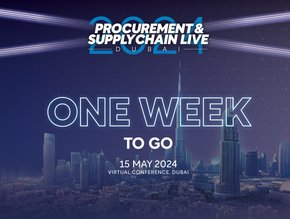The strategic benefits of supplier relationship management

For those seeking greater, long term value from their suppliers, supplier relationship management (SRM) is an integral component of the procurement function. With no end in sight to the volatility and disruption of the supply chain industry, and no ability to predict the risks to come, “both SRM and category management have become increasingly important as an operating model for organisations hoping to navigate the turmoil”, according to Andrea Greenwald, Senior Director Analyst for Gartner’s Procurement Advisory Practice.
A well-designed SRM programme can help companies to increase their collaboration and identify the right kind of suppliers suited to their business, product and beliefs. It can also help to improve cost optimisation, top-line growth, supplier innovation, and process improvements.
Greenwald explains that the perfect recipe for successful SRM is to: “define the charter for the SRM programme, segment suppliers for criticality and risk to your organisation, develop a governance model to manage said suppliers, map and gain buy in from all stakeholders, and govern the suppliers according to the defined governance.”
Following this ‘recipe for success’, helps to develop a reputation of being a ‘customer of choice’ benefiting from competitive preferences from scarce resources across a critical mass of suppliers within an organisation’s supply base. “To be a customer of choice, sourcing and procurement organisations must consistently exhibit specific customer-of-choice behaviours with strategic suppliers to build a joint relationship and trust – such as sharing strategic information, taking the long view and living up to your commitments,” says Greenwald.
When it comes to identifying these strategic suppliers Greenwald explains that one effective method is the ‘kraljic matrix’. “The kraljic matrix is the most common methodology for segmenting suppliers by strategic, tactical, leveraged and bottleneck. This two-by-two methodology of scoring by risk and impact is just one methodology to identify the level of importance of a given supplier. We recommend customising the segmentation model to what your company is looking to achieve out of SRM.”
While good relationships will help to eliminate waste activities within the supply chain, Greenwald warns that “lack of internal buy-in, lack of supplier willingness, and competing priorities and internal resourcing” are common challenges to overcome when striving for a ‘customer of choice’ reputation. She also highlights that, while Technology can be a helpful tool when it comes to any sort of collaboration activity, “it’s important to know however that supplier management technology as a whole is very fragmented. Therefore, it’s helpful to holistically understand the use case for the technology you are purchasing, since it won’t be able to do everything”.
Other challenges to be aware of include:
- Different business cultures. With many organisations sourcing overseas, understanding cultures can be difficult and is something to bear in mind to help build a stronger relationship.
- Corporate social responsibility (CSR) and compliance. It’s mutually beneficial for both parties to understand and meet the ethical, social, and environmental standards set out by the organisation itself and the government of the operating country. As well as ensuring that regulatory,environmental, and manufacturing standards are met.
Ultimately, SRM is all about creating value that is mutually beneficial. It is a strategy that can - and in Greenwald’s opinion – “is better to be conducted in-house since influence is the magic ingredient to make it all work”. Once a relationship has been developed with a supplier, it’s crucial to maintain and grow the relationship in creative ways to optimise the entire business value chain beyond the immediate supplier impact. Having real-time visibility into supplier data and performance can help with this, as well as having supporting suppliers to lean on during times of disruption to ensure value and continuity is maintained.
- Danone’s key to effective supplier relationship managementProcurement Strategy
- Business networks: key to next level of supply collaborationSupply Chain Management
- It’s inevitable that we will market to suppliersProcurement Strategy
- Procurement & imports: the UFLPA and due diligence softwareSustainable Sourcing






